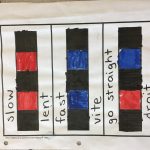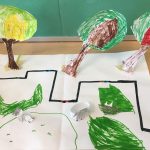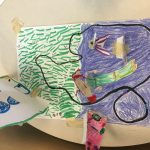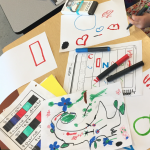Our Grade 5 and 6 classes teamed with kindergarten classes for collaborative explorations with Ozobot micro-robots. This collaboration between older and younger students offered a meaningful environment for creative problem-solving, relationship-building and a sense of purpose. Students met once each week over five months to learn a programming language, play with the robots and develop a summative storytelling project. With this special pedagogical framework, students developed digital fluency, effective communication skills and critical thinking skills. Most importantly, both older and younger partners looked forward to their time together each week, and met each other with smiles and parted with hugs.
Team Members
James Burnett
Ottawa-Carleton District School Board
Colin Walker
Ottawa-Carleton District School Board
April Sorenson
Ottawa-Carleton District School Board
Roger Lemelin
Ottawa-Carleton District School Board
Shane Gracey
Ottawa-Carleton District School Board
Professional Learning Goals
Our professional learning goals were to develop frameworks for community-building and project-based learning that effectively promoted mentorship and integrated learning.
- Collaborated in the development of intergrade hands-on opportunities for deep learning
- Targeted key characteristics such as resiliency, creativity and innovation, and collaboration for both teachers and students
- Showcased intergrade collaboration as a viable design for the development of student wellness
Activities and Resources
JK/SK and Grade 5 and 6
- Learning the progression of Ozobot programming languages
- Collaborating in exploring, designing, creating and testing of programming skills
- Applying these skills in a summative storytelling project
Unexpected Challenges
- In a few instances, buddies experienced difficulties in collaborating. Older students were occasionally frustrated with the lack of attention and focus offered by their Kinder partners.
- We also witnessed instances in which older/younger buddies insisted on doing all the work themselves to the exclusion of their partner
Enhancing Student Learning and Development
- Students discovered and looked forward to their spending time with their partners
- There was a palpable connection between partners. When they crossed paths in the halls or in the schoolyard, smiles, hands waving “hello” and hugs were abound.
- Buddies read to each other and discussed story elements. They then composed original narratives that were parodies of fairy tales and “enacted” their stories by programming robots to move through the scenes they created for their stories.
Sharing
- Students shared their projects with classmates on an ongoing basis as each new element was developed
- Parent Counsel was kept abreast of the intergrade collaborations centred around programming micro-robots
- Parents of both younger and older students were invited to a show and tell of the storytelling projects. Students prepared and presented their parents with fairy tale parodies and shared their process, difficulties and what they learned.
- Some older students wrote articles for a community newspaper and letters to the Minister of Education highlighting the benefits of hands-on, collaborative projects
Project Evaluation
- The collaboration between Kinders and Grade 5 and 6 students was effective in relationship- and community-building and in learning programming languages with robots
- Student collaboration varied. At times, interactions were in-depth and both partners were directly engaged on the same task, while in other instances, older and younger students were doing parallel activities and checking in on each other. Both proved to be a necessary part of the overall process.
- All students engaged in a unique hands-on collaboration in which programming skills were learned and applied in self-directed,cross-curricular projects
Resources Used
Resources Created
These resources will open in your browser in a new tab, or be downloaded to your computer.





